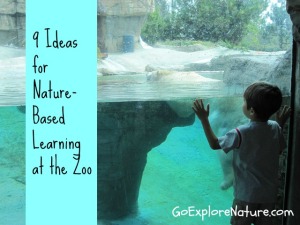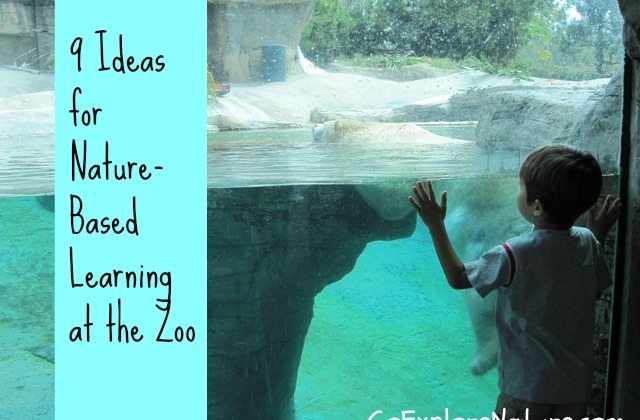When The Explorers were younger (read: sitting in a stroller), our visits to the zoo tended to focus primarily on identifying and naming critters. These days, we do a whole lot more than that.
In spite of the fact that I’m not formally trained as a classroom educator, I’ve figured out a few ways to turn our visits into fun learning opportunities that extend well beyond our time at the zoo.

Here are a few of my tips for sneaking in some nature-based learning at the zoo:
1. Take advantage of educational presentations.
These are designed with families (and kids) in mind. Whether it’s an animal feeding or a talk, these give us a chance to get up close and personal with a zoo resident. Plus, we can usually ask questions (and we love that!).
2. Go on an animal scavenger hunt.
Jot down a list of animals you think you might see during your visit, then see how many you can find. If you’re not sure what you might see, focus on certain traits instead, like “an animal from Africa” or “an animal that swims.”
3. Focus on one group of animals.
This works well if you visit the same zoo often. We’ll go to our local zoo one day to spend time with just the amphibians and reptiles, another to check out the petting zoo. More focused visits allow time for hanging out a bit at each exhibit.
4. Ask questions!
Some zoos have educators on hand at exhibits. Other times, I’m the one posing questions to The Explorers – anything age-appropriate to help them engage with what they’re seeing in front of them.
5. Challenge kids to learn one new thing.
Those signs outside the exhibits can be helpful, but aren’t required. Sometimes just watching closely will do the trick. The Little Explorer recently discovered that roadrunners are birds, but don’t fly – which explains why they’re so fast on their feet. The Big Explorer had written a report on peregrine falcons earlier this year, but finally saw one eating at a zoo.
6. Allow for creativity.
Some kids like to draw, sketch or write about their experiences. Find a comfy spot during your visit to do just that.
7. Make real-world connections.
We discuss life cycles a ton these days since we’re such huge fans of insects. We also talk about where animals fall in their respective food chains and how human actions impact their place in the world. We want to know if there’s something we could be doing to help.
8. Play a silly animal game.
Some kids like to pretend to be animals. We play the question game: One of us thinks of an animal we saw during our visit and offers three clues. The rest of us have to guess.
9. Discuss your favorite things.
No visit to the zoo is complete without talk of our favorite things. Not just an animal we saw, but an experience or feeling we had. These are the things that stick with us the longest.
How do you turn a visit to the zoo into something the kids will remember long after you’ve left?






Thanks, Mel. Of course, strolling around following your kids' leads isn't bad, either. 🙂
These are such great ideas. We still tend to stroll around the zoo, naming things, and not learning anything. I sometimes think I should do more, and now I have a lot of great ideas.
Thank you, Snowbird!
Again, wonderful suggestions.xxxxx
What a great idea, Suzi! We're putting together our first animal photo book & I'd love to add in information about animals (over time as you suggest). 🙂
We take photos of the animals and make an animal collage/board at home. Then on a day when we're bored we pick an animal and learn more about it (National Geographic Animals website is great for this).